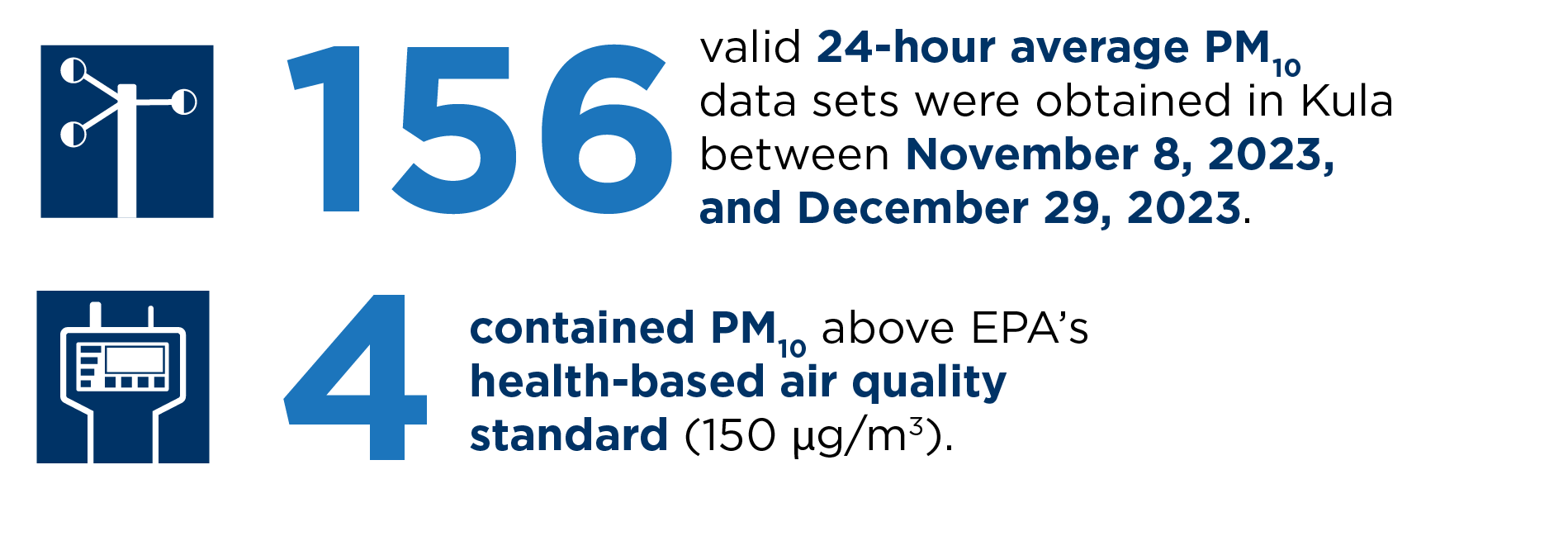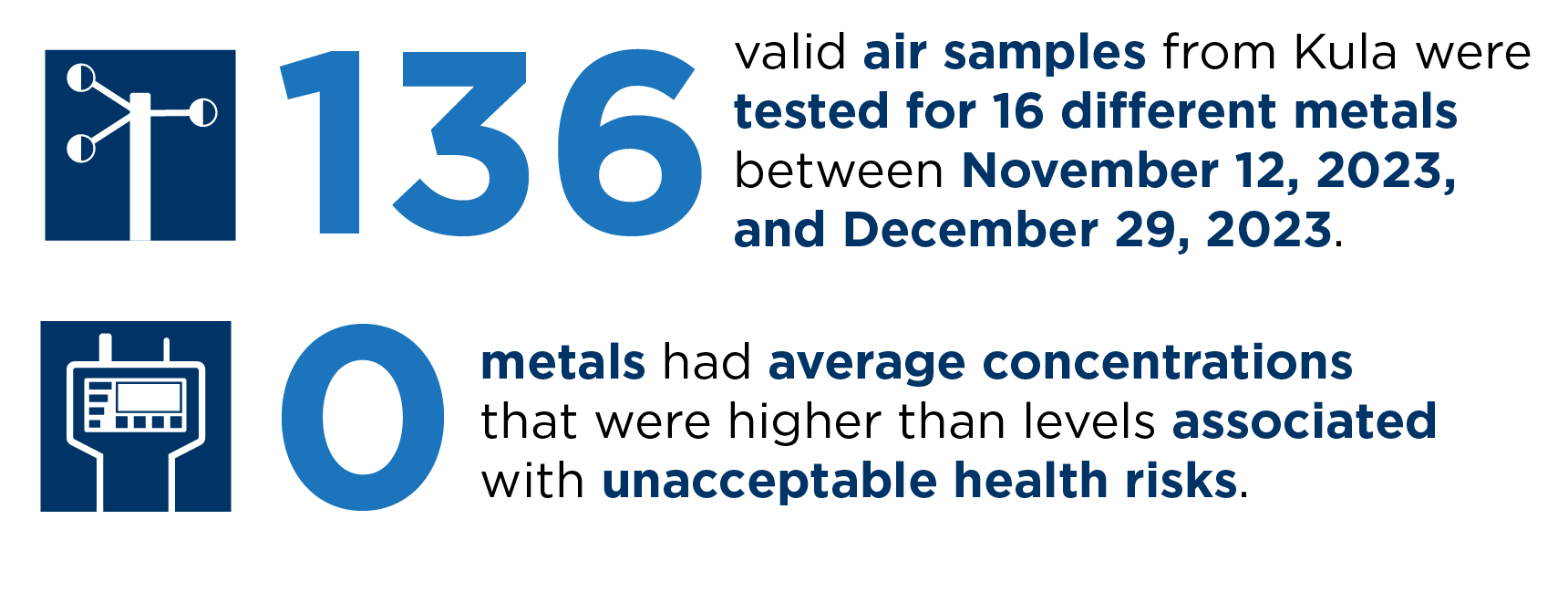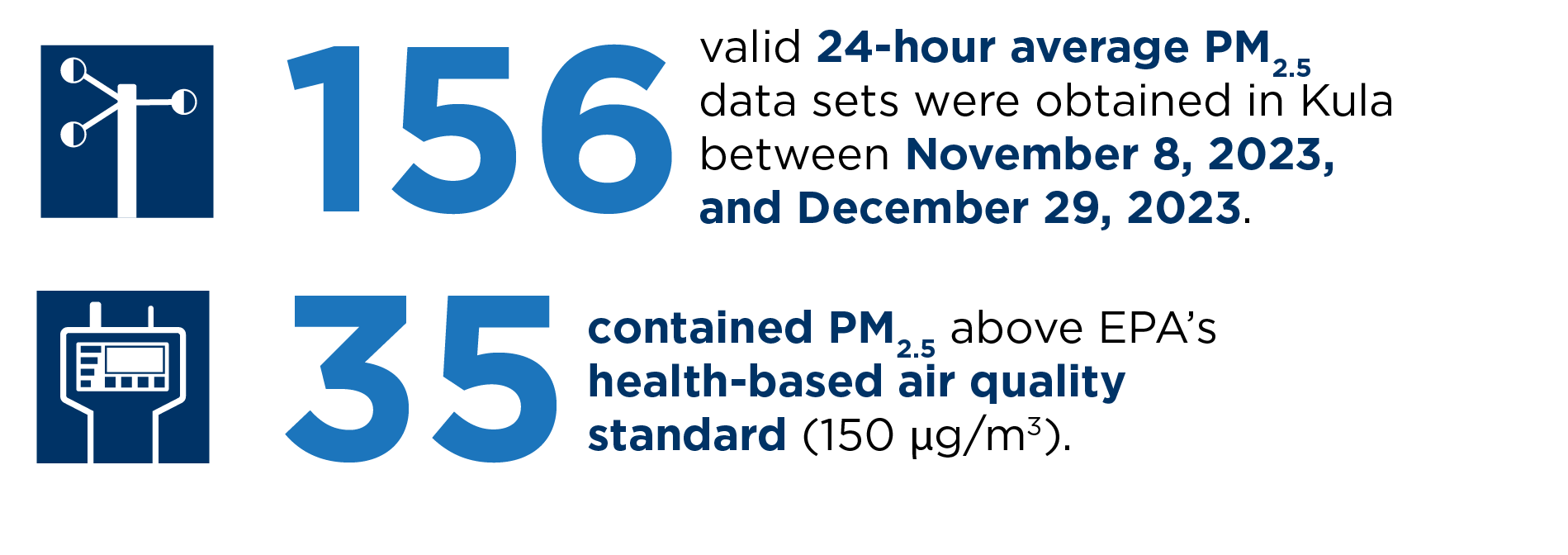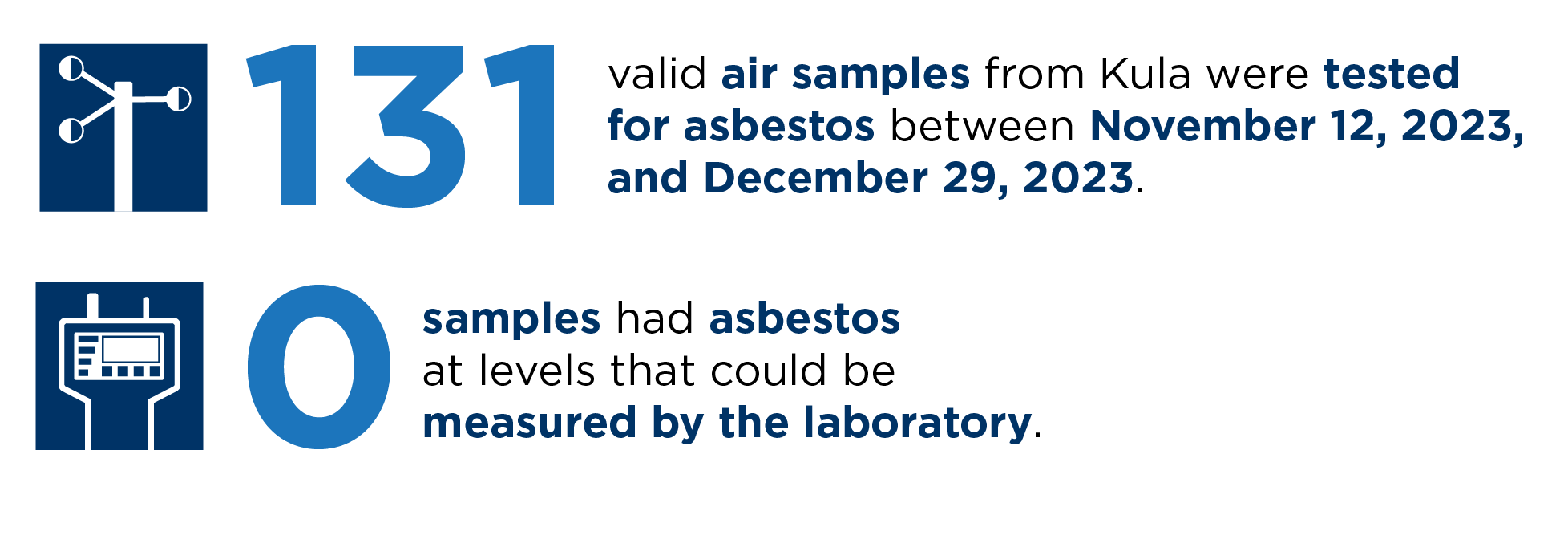Kula
Air | Ash and Debris | Beach Sand | Coastal Sediment | Coastal Waters | County Parks | West Maui TDS Site | Soil
Maui Wildfire Data: Air
Kula
Community air monitoring took place in late 2023, 2024, and early 2025. Monitoring was completed February 19, 2025. Data are available below.
Debris removal operations in Kula are complete, and DOH monitored the air at three locations in Kula throughout this activity. This monitoring found particulate matter sometimes was higher than screening levels. But with very few exceptions, these higher amounts of particulate matter were caused by private property owner activities at or near the monitoring locations and by factors other than USACE debris removal. Further information on DOH’s past air monitoring in Kula follows.
PM10 Findings
PM10 particles are airborne particles that are smaller than fine grains of sand—and they are smaller than the thickness of human hair. PM10 comes from many different sources, like wind-blown dust, construction, cars, and agriculture. PM10 measured in Kula could have contained ash from the fires, as well as dust and particles from other sources. During the Kula debris removal activities, DOH performed 24 hour/day air monitoring of PM10 at three community locations.

The four instances of elevated PM10 levels all occurred at one monitoring site. Several factors unrelated to debris removal operations were observed to have contributed to the higher levels. They included high winds and a nearby homeowner performing dust-generating activities, like spreading woodchips, operating a mini excavator, clearing brush, and cutting trees.
Download the complete set of Kula PM10 monitoring data (XLSX, downloads a file).
Metal Findings
Antimony, arsenic, cobalt, copper, and lead are substances that occur naturally in rock and soils in Hawaii and elsewhere. These substances are also found in a wide range of consumer products and structural materials. After the wildfires burned in Kula, these harmful substances were detected in the ash. At high levels of exposure over long time frames, breathing in these substances can cause a range of non-cancer health effects. For some of these substances, like arsenic, longer term exposure at high levels can cause cancer. During the Kula debris removal activities, DOH collected air samples every day at three locations and had those samples analyzed for metals.

Even though the ash in Kula contained metals and these same metals were found in the air, DOH’s air sampling showed that the airborne amounts of metals were extremely low. The Kula debris removal operations did not cause metals in air to reach levels that are harmful to people’s health.
Download the complete set of Kula metals monitoring data (XLSX, downloads a file).
PM2.5 Findings
PM2.5 particles are airborne particles that are so small that they can go deep into your lungs. PM2.5 in Kula could have contained ash from the fires, and it could also have come from other sources. During the Kula debris removal activities, DOH also conducted 24 hour/day air monitoring of PM2.5 at three community locations.

The instances of elevated PM2.5 levels occurred at two of the three monitoring sites. During a few instances, nearby debris removal and erosion control activity may have contributed. However, most elevated PM2.5 levels resulted from other factors, like high winds and nearby homeowners performing dust-generating activities. Examples of those activities include operating woodchippers, spreading woodchips, cutting trees, clearing brush, and applying mulch. In fact, on several days with elevated PM2.5 levels, debris removal activity was not occurring anywhere in Kula.
Download the complete set of Kula PM2.5 monitoring data (XLSX, downloads a file).
Asbestos Findings
Asbestos refers to different types of naturally occurring mineral fibers. The fibers were widely used for decades in products like car brakes and construction materials, including insulation, tiles, and shingles. Asbestos fibers are extremely resistant to heat and are not readily destroyed by fire, which is likely why some asbestos fibers were identified in the ash at Kula. At high levels of exposure over long durations, breathing in asbestos fibers can cause cancer and other health effects. During the Kula debris removal activities, DOH collected air samples every day at three locations and had those samples analyzed for asbestos.

Even though asbestos was found in the ash in Kula, the amount of asbestos in the air has been too small to detect. People in Kula were not exposed to airborne asbestos at levels of health concern.
Download the complete set of Kula asbestos monitoring data (XLSX, downloads a file).
Air | Ash and Debris | Beach Sand | Coastal Sediment | Coastal Waters | County Parks | West Maui TDS Site | Soil
